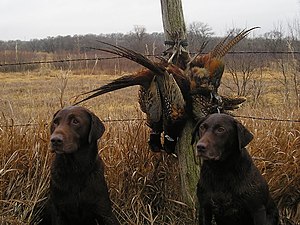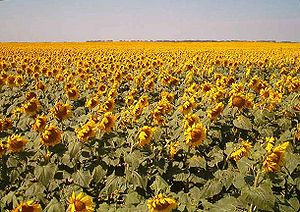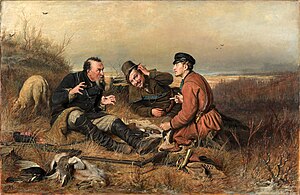 |
| Jabs Farm: Minnesota Valley National Wildlife Refuge, MN, USA (Photo credit: Wikipedia) |
The U.S. Fish and Wildlife Service today announced a proposal to open one
new refuge to hunting and to expand hunting opportunities at 16 national
wildlife refuges in 14 states. If approved, the proposal would provide
additional public hunting opportunities in fulfillment of the National
Wildlife Refuge System Improvement Act of 1997.
“The National Wildlife Refuge System offers some of the best public
hunting and fishing around, helping to connect generations of Americans
with this great outdoor tradition,” said Service Director Dan Ashe. “Our
goal is to increase hunting opportunities for people of all ages and
backgrounds, wherever these opportunities are compatible with refuge
purposes.”
Notice of the proposal was published in the Federal Register on July 11,
2012; the public has until August 10, 2012, to comment on the proposed
changes. To comment on the proposed hunting rule changes, please click
here or visit
http://www.fws.gov/refuges/hunting/huntFishRegs.html.
The proposal would open the Detroit River International Wildlife Refuge,
MI, to migratory bird hunting, upland game hunting and big game hunting
for the first time since its establishment in 2001. The refuge is closed
to sport fishing.
The proposal calls for closure of Hakalau Forest National Wildlife Refuge,
HI, to big game hunting. With this change, the refuge will be closed to
all hunting activity. The refuge is also closed to sport fishing. The
proposal also calls for closure of the Santee National Wildlife Refuge,
SC, to migratory bird hunting. The refuge is open to sport fishing.
All but two of the refuges in the proposal are open to sport fishing and
would remain so.
Other proposed changes are:
Big Muddy National Fish & Wildlife Refuge, MO: Expansion of areas
for migratory bird hunting, upland game hunting and big game hunting. The
refuge is also open to sport fishing.
Big Oaks National Wildlife Refuge, IN: Expansion of the refuge’s
big game hunting area. The refuge is also open to upland game hunting and
sport fishing.
Block Island National Wildlife Refuge, RI: Addition of deer to the
refuge’s big game hunting program. The refuge is also open to sport
fishing.
Bond Swamp National Wildlife Refuge, GA: Addition of migratory
bird hunting and upland game hunting; expansion of area for big game
hunting and addition of wild turkey to big game hunting program. The
refuge is also open to sport fishing.
Chickasaw National Wildlife Refuge, TN: Expansion of area for
migratory bird hunting, upland game hunting and big game hunting. The
refuge is also open to sport fishing.
Deer Flat National Wildlife Refuge, ID: Expansion of area for big
game hunting. The refuge is also open to migratory bird hunting, upland
game hunting and sport fishing.
Hagerman National Wildlife Refuge, TX: Addition of turkey to
species in big game hunting. The refuge is also open to migratory bird
hunting, upland game hunting and sport fishing.
Saddle Mountain (Hanford Reach) National Wildlife Refuge, WA:
Expansion of area for migratory bird hunting, upland game hunting and big
game hunting. Addition of chukar (a member of the pheasant family) to
upland game hunting program. The refuge is also open to sport fishing.
Julia Butler Hanson Refuge for the Columbian White-Tailed Deer,
OR: Expansion of area for migratory bird hunting. The refuge is also open
to sport fishing.
Lower Hatchie National Wildlife Refuge, TN: Expansion of area for
migratory bird hunting, upland game hunting and big game hunting. The
refuge is also open to sport fishing.
Minnesota Valley National Wildlife Refuge, MN: Expansion of area
for migratory bird hunting, upland game hunting and big game hunting. The
refuge is also open to sport fishing.
Ninigret National Wildlife Refuge, RI: Addition of deer to species
for big game hunting program. The refuge is also open to sport fishing.
Red Rock Lakes National Wildlife Refuge, MT: Expansion of area for
migratory bird hunting and big game hunting. The refuge is also open to
sport fishing.
Upper Ouachita National Wildlife Refuge, LA: Expansion of area for
migratory bird hunting, upland game hunting and big game hunting. The
refuge is open to sport fishing.
Waccamaw National Wildlife Refuge, SC: Expansion of area for big
game hunting. Add woodcock to species for migratory bird hunting. The
refuge is also open to upland game hunting and sport fishing.
William L. Finley National Wildlife Refuge, OR: Expansion of area
for big game hunting. The refuge is also open to sport fishing.
While definitions of hunting categories vary by refuge and state,
migratory bird hunting generally includes ducks and geese. Upland game
hunting may cover such animals as game birds, rabbit, squirrel, opossum
and coyote. Big game hunting may include such animals as wild turkey, deer
and feral hogs.
Under the National Wildlife Refuge System Improvement Act of 1997, the
Service can permit hunting and fishing along with four other types of
wildlife-dependent recreational uses where they are compatible with refuge
purpose and mission. Hunting, within specified limits, is permitted on
more than 300 national wildlife refuges. Fishing is permitted on more than
270 national wildlife refuges. Other wildlife-dependent recreation on
national wildlife refuges includes wildlife observation, photography,
interpretation and education.
 The
Department of Natural Resources will offer a total of 708,650
antlerless deer licenses for the upcoming season after the Natural
Resources Commission (NRC) adopted quotas at its regular monthly meeting
last Thursday at Harsens Island.
The
Department of Natural Resources will offer a total of 708,650
antlerless deer licenses for the upcoming season after the Natural
Resources Commission (NRC) adopted quotas at its regular monthly meeting
last Thursday at Harsens Island.














